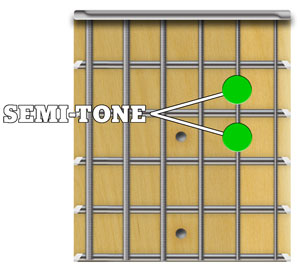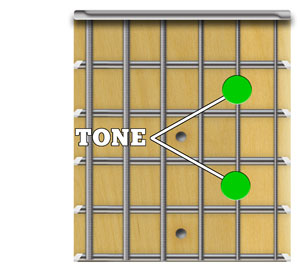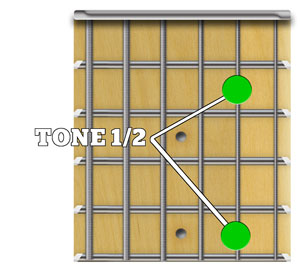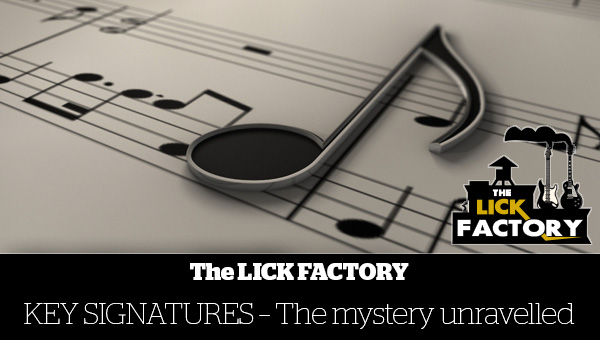The Major Scale – What and How
Through all genres of music across hundreds of years, the Major Scale has proven to be the stable backbone of western music. In this theory lesson learn the defining properties that make the Major Scale come to be.
the what
If there was to be a musical center of gravity, the major scale would without a doubt be a front runner. Through all genres of music across hundreds of years, this scale has proven to be the stable backbone of western music.
Before we look at the elements that make it up, lets look at what a scale actually is. A scale is a sequence of notes that act as stepping stones between a tonic and its higher octave. The Tonic is the name given to the first note of the scale and also acts as the naming note. For example if you build a major scale from C, the notes within in would start on C and finish at C again at the higher octave. The first note (C) would be the tonic and the scale would be therefore named the C Major Scale.

It’s important to realize that the notes within a scale are not the defining properties. It is the spaces between the notes (known as intervals) that give you the overall sound of the scale. This means that as long as you adhere to the intervals, regardless of the starting note the scale will always retain its classification (e.g.: Major, minor).
the how
There are 3 types of intervals that are generally used when creating scales. These three intervals are Tones (a.k.a. whole step), Semi-tones (half step) and Tone ½ (1 ½ step). In the LICK FACTORY courses, we refer to the Tone / Whole step with a ‘T’. The Semi-tone/half step as ‘S’ and the Tone ½ / 1 ½ Step as ‘T ½’.



The next step is identifying and distributing the correct intervals to make the major sound in a scale. Creating this scale follows a standard formula that is so frequently re-enforced throughout the LICK FACTORY courses. Remembering that it is the spaces between the notes that determine the sound of a scale, the Major Formula is: Tone, Tone, Semi-tone, Tone, Tone, Tone, Semi-tone.
Putting this formula into practice, we would have
1 (tonic) – Tone – 2nd – Tone – 3rd – Semi-tone – 4th – Tone – 5th – Tone – 6th – Tone – 7th – Semitone – 8ve.
It’s important to remember that when you are creating a scale based on intervals, the notes must be named in musical alphabet order. For example you can’t have a D and a Db or D# in the same scale.
Just like the Major Scale itself, harmonizing both as Triads and Four note chords creates all of the familiar sounding chords that you mostly use when playing. If you were do follow this process, you’d recognize such chords as Major, Minor and Dominant 7th.
Below is a listing of all the Major scales across the most common keys.
For fret-board diagrams of the scales, click here for block positions or here for 3 note per string positions.
Natural Scales

Sharp Scales






Flat Scales






This article is based on concepts from the LICK FACTORY’s Preliminary Lessons. Everything you need to know to get started on your musical journey.
Need a quicker fix? the ULTIMATE CHORD GUIDE: Volume 1 might be the answer.
Who’s your Teacher?

Kris Petersen is a name that has become synonymous with the Australian Music Industry. From clubs to stadiums, Kris has performed on every continent in the world and shared the stage with some of the world’s greatest artists.
In the last few years alone, Kris has performed with, or alongside Alice Cooper, Aerosmith, Orianthi, Van Halen, Billy Joel, Matt Sorumn (Guns n Roses), Eric Martin (Mr. Big), The Drifters, Tony MacAlpine, Buckcherry, Daryl Braithwaite, The Living End, Icehouse, Marcia Hines, The Screaming Jets, The Choirboys, Mental As Anything, Bruce Kulick (KISS), Leo Sayer, Pretty Boy Floyd and many more… read more





